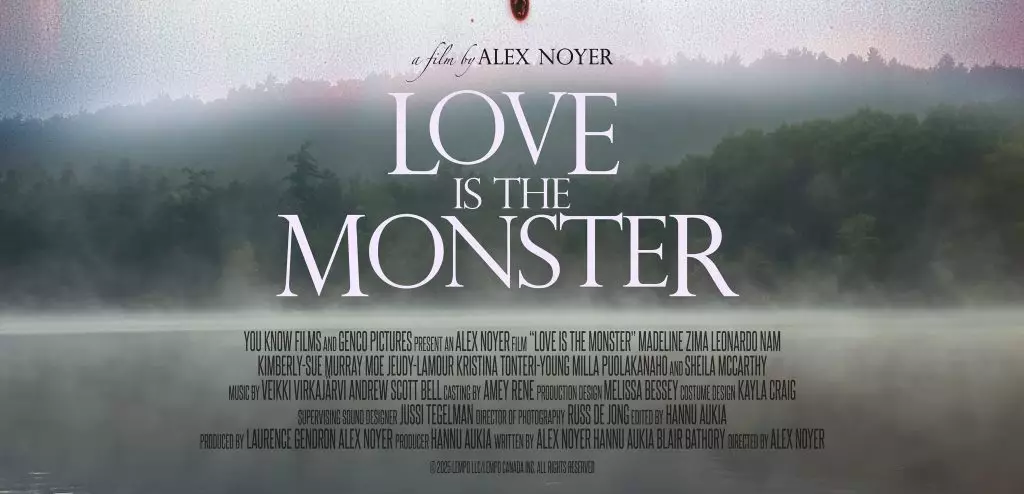The riveting world of horror cinema is about to receive a fresh infusion with “Love Is The Monster,” the latest offering from filmmaker Alex Noyer. This captivating narrative intricately weaves Finnish mythology into a modern tale of love and terror, encapsulating the essence of humanity’s perennial struggle against darker forces. As Noyer, known for his compelling storytelling, embarks on this journey, audiences are promised a vivid tapestry of emotion, folklore, and the uncanny, setting the stage for something truly exceptional in the realm of genre filmmaking.
In recent years, the landscape of horror has undergone a transformation, reaching beyond mere jump scares and gruesome details to explore the psychological and the folkloric. “Love Is the Monster” positions itself uniquely within this evolution by invoking the rich descendant threads of Finnish legend. With characters finding themselves ensnared by a menacing cult intent on resurrecting an ancient goddess, the film is not just a narrative of survival, but an exploration of the love that binds and sometimes constrains its possessors. As couples traverse this psychological labyrinth, the film is set to reflect our contemporary anxieties through the lens of age-old tales, effectively bridging the gap between the past and the present.
The Essence of Collaborative Storytelling
The creative effort behind “Love Is The Monster” is a testament to the synergy of experienced and emerging talents in film. Noyer, alongside co-writers Hannua Aukia and Blair Bathory, brings a multifaceted perspective that enriches the story’s depth. Each contributor possesses a unique insight into horror filmmaking, ensuring that the narrative is both authentic and engaging. Noyer’s commendable track record, including his adeptness at creating an atmosphere of suspense in projects like “Sound of Violence,” lays a strong foundation for this new endeavor.
The casting decisions are also noteworthy; with Madeline Zima from “Californication” and Leonardo Nam of “Westworld” leading the ensemble, the film draws on individuals who are not only talented but have also carved spaces in their respective genres. Supporting performances from seasoned actors such as Sheila McCarthy and Kimberly Sue-Murray promise to elevate the material, bringing an additional layer of emotional complexity that audiences crave in horror narratives.
Embracing Cultural Narratives
The collaboration between Raven Banner Entertainment and Finnish filmmakers underscores an evolving partnership that transcends mere geographical boundaries. Ravens Banner’s commitment to showcasing bold stories in horror is critical in a market often saturated with derivative content. Their focus on projects like “Love Is the Monster” not only enhances the diversity of voices within the genre but also allows international folklore and narratives to permeate mainstream cinema.
As the film gears up for its unveiling at the Cannes Marché du Film, there’s significant anticipation for how it will resonate with audiences. As James Fler, Managing Partner at Raven Banner, remarked, there’s a palpable affinity between Finland and Canada, which seems to lend itself well to the storytelling at hand. The shared cultural experiences can foster a unique narrative that will undoubtedly captivate viewers both familiar and unfamiliar with Finnish folk traditions.
Noyer’s Vision: Melding Past With Present
The specificity of the film’s premise—utilizing a retreat as the backdrop for unsettling events—echoes our current societal tendencies. It raises existential questions around love, trust, and the ever-present shadows lurking behind seemingly familiar experiences. Noyer’s declaration that “Love Is the Monster” is a modern folk horror experience emphasizes the film’s foundation on enduring themes of love’s duality: its potential to both elevate and destroy.
With a wealth of creative influence and cultural significance underpinning the project, “Love Is the Monster” emerges not merely as another horror film but as a transformative experience that promises to comment on contemporary relationships through the prism of ancient mythology. The intricate dance between reality and the supernatural is poised to keep audiences glued to their seats, leaving them pondering the deeper meanings of love long after the credits roll.
